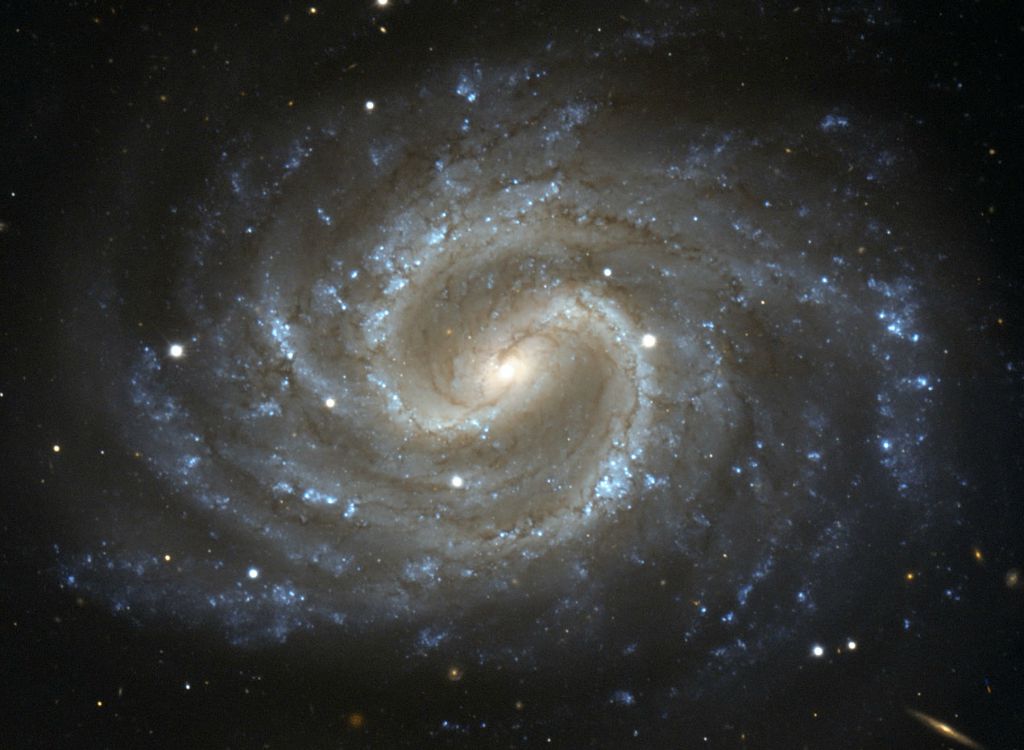

NGC 4535—otherwise known as PGC 41806 or UGC 7729—is an odd galaxy located roughly 50 million light-years from Earth toward the constellation of Virgo.
A spiral galaxy by classification, our field of view with NGC 4535 is dotted with the faint light of extremely distant background galaxies, yet it appears face-on from our vantage point. From here, we can see its well-defined central bar and its oddly-shaped spiral arms, which contain clusters of high-mass blue-white stars. Farther inward, cooler, and more evolved stars reside, congregating within the central bulge and taking on a faint yellow coloring.
From the ESO:
This visible image was made with the FORS1 instrument on ESO’s 8.2-metre Very Large Telescope. The galaxy can also be seen through smaller amateur telescopes, and was first observed by William Herschel in 1785. When seen through a smaller telescope, NGC 4535 has a hazy, ghostly appearance, which inspired the prominent amateur astronomer Leland S. Copeland to name it “The Lost Galaxy” in the 1950s.
NGC 4535 is one of the largest galaxies in the Virgo Cluster, a massive cluster of as many as 2000 galaxies, about 50 million light-years away. Although the Virgo Cluster is not much larger in diameter than the Local Group—the galaxy cluster to which the Milky Way belongs— it contains almost fifty times as many galaxies.